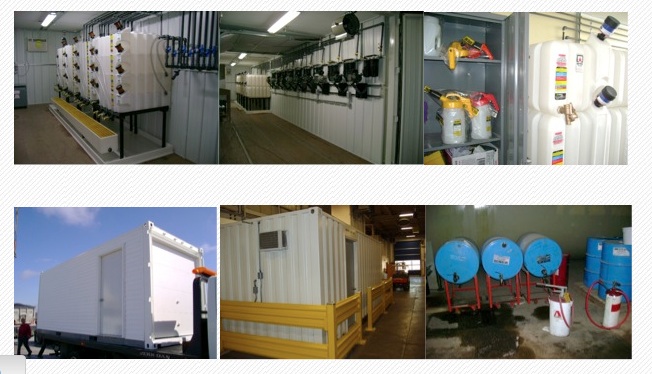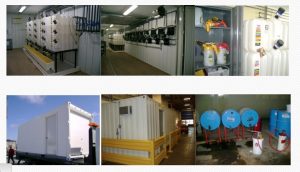Effective lubrication storage is often overlooked when developing a reliability improvement process at a manufacturing plant. The way lubricants are delivered to the plant location and the speed at which they are properly stored are a key in long life or of equipment components. Getting the drums or containers out of the elements, whether it be moisture, heat, cold, or plant dirt and foreign material, is a key to lubricant and equipment life cycles.
Studies have shown that 50% of all equipment or component failures in plants can be traced back to lubrication issues. Issues such as wrong lubricant, contaminated lubricants, improper change out frequencies, and lack of lubricant condition monitoring are just a few. Understanding these failure modes and correcting them can reduce failures and extend equipment life cycles.
New lubricants delivered to the plant are almost always above the cleanliness standards of a good lubrication excellence process. I always teach that all lubricants, before being placed into equipment, should be an ISO 16/14/13 at minimum for every application. I have never tested a new lube at any facility and saw those results. Many are over 18/16/14 and some with high moisture levels.
Before we start the blame game and say our lube providers are not doing a good job let’s look at why we are seeing these higher levels. First of all we get what we ask for or maybe what we don’t ask for. If you want 16/14/13 lube then ask for it. Your lube vendor can filter the drum at their location before bringing you the product. If they don’t want to do this, find a vendor who will.
Some vendors used recycled drums which they say are cleaned and dried. I have visited drum cleaning facilities and I can tell you there is no way to get all the particles out of a used drum and if care is not taken, the moisture is not removed completely either. Some vendors brag they use only new drums. If you watch the process of making a new drum you will find they are also not free of particles from the drum fabrication process. New drums are not clean and have millions of small particles.
What size particles are we talking about? The particles we want to remove are 5-10 microns in size. The human eye can only see particles 40 microns and above. If you run your finger across the top of a door frame at your home or office, the dust is approximately 40 microns in size. The average film thickness for a loaded bearing, gear, or hydraulic system component is 3-10 microns depending on load conditions. So these 25-80 microns particles I find in new lubes are like running boulders through your equipment components.
Designing and developing good receiving and storage practices is key to long equipment life. Many of the storage areas I have built or help design are set up in the following steps.
All lubricants arriving at a facility are move or stored out of the weather or any dirty environments.
Lubricants are pumped from drums through low micron and beta value filters. An example may be a 10 micron beta 1000 filter.
Lubricants are placed in storage containers that have a desiccant breather installed.
Since additives sometimes settle out a method to recycle the container may be designed.
Room should insulted and sealed from external elements
The storage area should be ambient controlled to eliminate temperature wide temperature swings
Are may need dehumidifier in some geographical locations
The room must be maintained in a clean condition free of foreign material or plant dust
Room should have enclosed storage for all lube equipment such as grease guns, grease, oil transport containers, funnel, and spare filters
Room should contain fire proof trash can for oily rags
Room should be well lighted for safe work conditions
Room may require some form of fire suppression but if only storing lubes they are very hard to get burning. Fire suppression is for keep other small source fires extinguished.
Many plants do not or cannot afford the space for adequate I have been designing and building Plug & Play lube storage rooms for a couple years and they are always cheaper than building or modifying on site areas. The advantage is they can be set anywhere and all that is needed when they arrive is the power connected and they are ready to use.
Some different pictures above of portable lube storage. The picture on the lower right side is what I see many times at plants and creates a lot of lubrication and equipment failures. If you want longer equipment life cycles, improved equipment and process reliability it starts at the beginning with lubrication care.
If you have questions about lube storage design or you are interested in lubrication training please contact Charli or myself and we will get you directed to other resources. I have a future article coming on the 50 failure modes of lubricants so keep checking in.
About the Author:
Terry Harris – Mr. Harris is a Certified Maintenance & Reliability Professional, certified through The Society of Maintenance & Reliability Professionals. Mr. Harris worked in the manufacturing/process industry for 26 years. Most of his time was devoted to maintenance area efforts with most of his career being devoted to improving the reliability of his plant and other US and European locations. Over the past 8 years Mr. Harris has performed training in the US, and 12 other countries.
Mr. Harris owns Reliable Process Solutions in which he performs training in the areas of Predictive technologies, Proactive Maintenance techniques, Lubrication Excellence and many other programs. Mr. Harris has developed many Proactive maintenance programs to bring maintenance operations to a more efficient and profitable stage. Many of the training programs teach companies how to make equipment last longer. These methods have been proven to extend equipment life by 3-8 times.






Comments